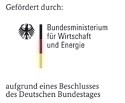Tracking current resistance
Tracking resistance for plastics in the high-voltage range
Due to the use of renewable energies and the efforts to reduce greenhouse gas emissions, the use of electrical storage systems is becoming increasingly important. In order for these to work as efficiently as possible and to shorten charging times, high voltages are used. For the same power to be transmitted, increasing the voltage can also save expensive copper and thus weight. High electrical voltages (800 V to 1 kV) are already being used to increase the power of devices, systems and vehicles. Plastics are used to provide the necessary electrical insulation for the components. An important parameter for their suitability is the tracking resistance.
The aim of the new research project at the KUZ is to extend the measurement method for tracking resistance from the current 600 volts to 950 volts. This will enable testing services for mobile applications (e.g. eMobility) as well as for stationary areas (e.g. battery storage, wind turbines, photovoltaics). In this context, the experts at the KUZ answer the questions: What electrical voltage can be achieved? How pronounced is creepage path formation in typical insulating materials and what failure mechanisms can be observed?
Duration: 11/2021 - 04/2024
Contact
Christian Rast
+49 341 4941-803
rastnoSpam@kuz-leipzig.de



